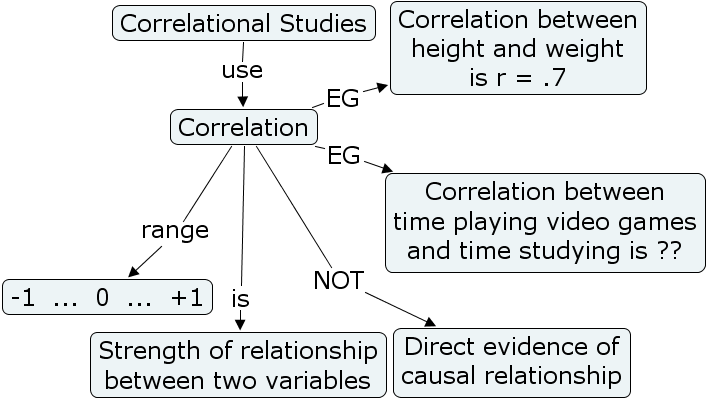
The symbol ‘ρ’ (Rho) is known as Rank Difference Correlation coefficient or spearman’s Rank Correlation Coefficient. The notion ‘r’ is known as product moment correlation co-efficient or Karl Pearson’s Coefficient of Correlation. The co-efficient of correlation is always symbolized either by r or ρ (Rho). Hence, researchers have to be careful about the statistical data while drawing inferences.Co-efficient of correlation is a numerical index that tells us to what extent the two variables are related and to what extent the variations in one variable changes with the variations in the other. A strong positive correlation does not imply there is necessarily a relationship between them it might be due to an unknown external variable. However, statistical data is based on a sample, and hence, can sometimes lead to misleading results. A correlation between two variables aids the researcher in determining the association between them. A direct relationship or positive relationship does not imply that they are the cause and effect of each other. It must be noted that correlation does not imply causation. ► Couples who spend more time together have a healthier and long-lasting relationship. ► When you meditate more, your concentration level increases. ► With increase in consumption of junk food, there is increase in obesity. ► When you pay more to your employees, they’re motivated to perform better. ► When you study more, you score high in the exams. ► When demand increases, price of the product increases (at same supply level). ► With the growth of the company, the market value of company stocks increase. ► If I walk more, I will burn more calories. Examples of Positive Correlation in Real Life However, there are other variables that cannot be ruled out, such as the level of concentration of the students, which can influence the scores. The inference that more the hours you study, better the score, might hold true, if it is assumed that the IQ level of all the students is similar, on an average. Though the trend here observed is positive, there are high chances that the IQ level of that student can play an important contributing factor too. This data is based on the statistics of 20 students in a class with different IQ levels. ► However, this survey method has its own limitations. We try to compare the relationship between the number of hours the student has devoted in studying, and his corresponding score. The researcher then records the marks scored by the students in the test.

The researcher picks up 20 students from a class, and records the number of hours they studied for the test. Let ‘x’ be the number of hours that a student has studied, and ‘y’ be his score in a test (maximum marks: 120). The example will help you understand what is positive correlation. Let’s take a hypothetical example, where a researcher is trying to study the relationship between two variables, namely ‘x’ and ‘y’. Correlation is used in many fields, such as mathematics, statistics, economics, psychology, etc. Positive correlation implies there is a positive relationship between the two variables, i.e., when the value of one variable increases, the value of other variable also increases, and the opposite happens when the value of one variable decreases. A positively inclining relationship is nothing but positive correlation. Correlation studies the relationship between two variables, and its coefficient can range from -1 to 1.


 0 kommentar(er)
0 kommentar(er)
